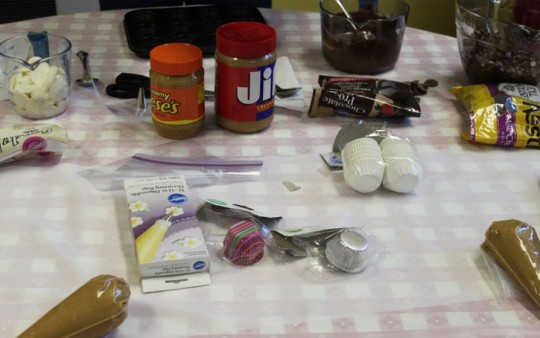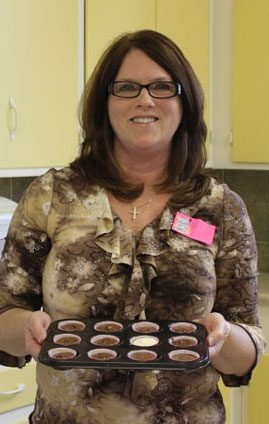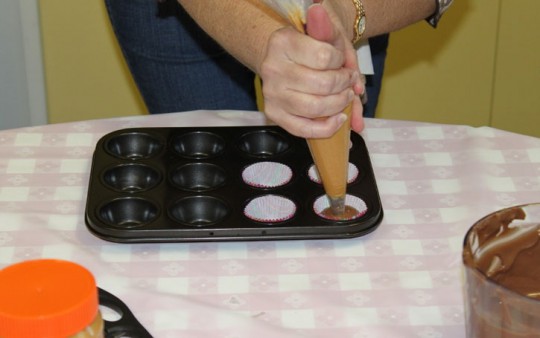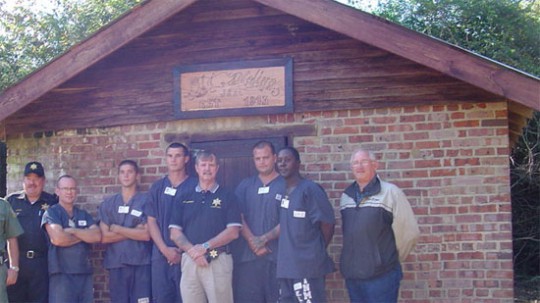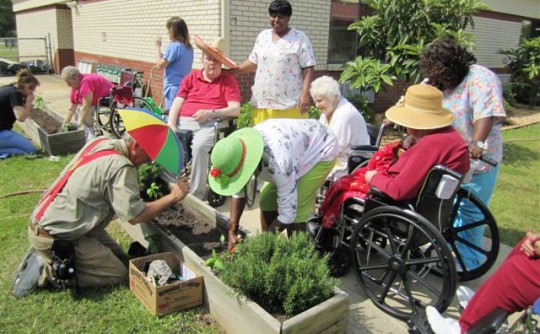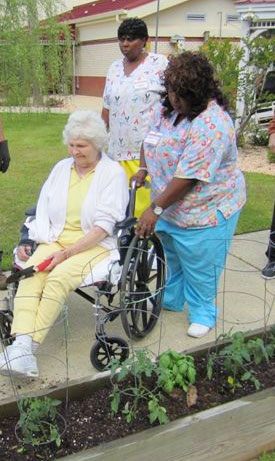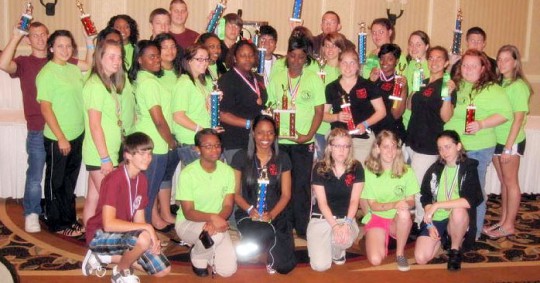Residents Come Together To Help Tornado Victims
May 1, 2011
They came from Flomaton. Cantonment. Century. Even Illinois.
Vehicle after vehicle turned into the Flomaton Volunteer Fire Department Saturday to help Alabama tornado victims. Some gave cases of water, some gave handfuls of cash. Others gave what pocket change they could spare. But together, they raised hundreds of dollars and thousands of pounds of supplies for Alabama residents whose lives were ripped apart by the second deadliest tornado outbreak in U.S. history.
“Words cannot express how grateful we are for all that was done today,” Alisa Hart of the Flomaton Volunteer Fire Department said. “We are so proud and honored to be a part of this community.”
“Tuscaloosa was one of the first to help us after Ivan,” Larry White said on WPFL radio. White is an owner of the small station licensed to Century, and he’s also an Escambia County (Ala.) Commissioner. He spent his Saturday under a shade tree in the fire department parking lot broadcasting live, continually reminding those that might be listening to stop by the store and pick up supplies to donate at the Flomaton VFD.
A family from Illinois scanning the radio dial as they passed through town heard White’s plea and stopped to make their donation.
Shoreline Transportation has donated a 53-foot enclosed trailer for the supplies. They will transport the trailer to north Alabama on Monday. In the meantime, items such as water, Gatorade, crackers, cookies, other non-perishable food items, wipes, manual can openers, batteries and battery powered items like flashlights and radios are still being accepted at the Flomaton Volunteer Fire Department . Organizers ask that items be left outside the trailer next to the fire department on Highway 31 near Highway 113. Volunteers are checking for donations regularly through Monday morning and moving items into the trailer.
Pictured: A trailer is loaded with tornado relief supplies Saturday morning at the Flomaton Volunteer Fire Department. NorthEscambia.com photos, click to enlarge.
Photos: Atmore Relay For Life
May 1, 2011
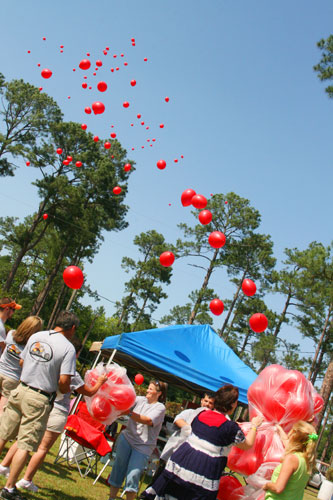 The annual Atmore Relay for Life to benefit the American Cancer Society began Saturday afternoon.
The annual Atmore Relay for Life to benefit the American Cancer Society began Saturday afternoon.
For a NorthEscambia.com photo gallery from the event, click here.
Two other North Escambia area Relay for Life events are coming up in two weeks — the Relay for Life of Greater Escambia and the Century Relay for Life will both be held on May 13.
Pictured top: The Survivor’s Lap begins Saturday afternoon at the Atmore Relay for Life. Picture inset: Red balloons are released during the event. NorthEscambia.com photos, click to enlarge.
Featured Recipe: Molino Homemakers’ Peanut Butter Cups
May 1, 2011
Today’s featured recipe is “Molino Homemakers’ Peanut Butter Cups” submitted by club member Terri Brown.
Molino Homemakers’ Peanut Butter Cups
Things you will need are mini baking cups, mini muffin pan, chocolate chips, peanut butter, plastic decorating bag, decorating tip #10, bowl for melting chocolate and two spoons.
Place mini baking cups in the mini muffin pan, melt chocolate and spoon into baking cups about 1/2 full. Next, spoon peanut butter into decorator’s bag which has tip#10 in the bottom. While chocolate is still melted insert tip of decorating bag into chocolate and squeeze peanut butter until the cup is about 3/4 full with chocolate covering the peanut butter. When all cups are filled, place pan in refrigerator for about 15 minutes until chocolate is hard. Remove from fridge and enjoy!
The next Molino Homemaker’s meeting will be on Wednesday June 1, 2011 at Aldersgate United Methodist Church at 10 a.m. The Homemakers will Tour the Ronald McDonald House May 4th in place of their regular meeting. Dues are $5 per year. Visitors are welcome.
Submitted photos for NorthEscambia.com, click to enlarge.
Escambia County Road Prison Chief Jeff Bohannon Roasted
April 30, 2011
Escambia County Road Prison Division Manager Jeff Bohannon was “roasted” by employees and prisoners alike Friday afternoon as he retires from the facility after 14 years of service.
During his tenure, Bohannon was instrumental in the development and administration of an educational and rehabilitation program for the inmates.
The Escambia County Road Prison is the only county-operated work camp in Florida, providing a large part of the manual labor for the Roads and Bridges Division from an 80-acre compound in Cantonment. Supervised by correctional officers, road prison work crews perform various tasks for the county such as clearing rights-of-way, grounds maintenance, drainage projects, and other aspects of road and stormwater maintenance.
Pictured top: Escambia County Road Prison Division Manager Jeff Bohannon (pictured center in tan pants) was instrumental in providing the labor to clean up and restore the Old Molino Jail. Pictured inset: Jeff Bohannon. NorthEscambia.com and submitted photos, click to enlarge.
Pictured top: Jeff Bohannon
Byrneville Elementary Honors Three Outstanding Students
April 28, 2011
Byrneville Elementary School is honoring three outstanding students. They are (L-R) Byrneville Elementary’s Student of the Year Shellie Harrelson, Cox Inspirational Hero Award winner Anna Belle Barberree, and the fourth grade’s Shining Star award winner Peyton Newsome. Also pictured is Principal Dee Wolfe-Sullivan. Submitted photo by Candice Thornton for NorthEscambia.com, click to enlarge.
Friends Of The Library Book Sale Begins Friday
April 27, 2011
 It’s time to stock up on summer reading material, and the Friends of the Pensacola Public Library Spring Book Sale is the place to do it at a reasonable price this weekend.
It’s time to stock up on summer reading material, and the Friends of the Pensacola Public Library Spring Book Sale is the place to do it at a reasonable price this weekend.
The Book Sale will be Friday through Sunday at First United Methodist Church Wright Place, 80 E. Wright Street in downtown Pensacola, and will offer thousands of gently used hardcover and paperback books, CDs and DVDs. Most range in price from 25 cents to $3. It also will feature a “Collectors’ Corner” and silent auction to showcase the more valuable books, Chairwoman Meredith McCarthy said.
The preview sale will be from 4:00 until 8:00 Friday night for members. Non-members can attend for a $5 admission fee. Non-members can join with their admission fee going toward their membership fee.
On Saturday, hours are 9 a.m. to 5 p.m. and on Sunday, hours are noon to 3 p.m. No admission is charged those days. On Sunday, a bag of books can be purchased for $5.
All proceeds from the sale go to support the West Florida Public Library system, including the Century Branch Library.
For more details, call McCarthy at (850) 341-1434.
Pictured: Volunteers work to prepare for the Friends of the Pensacola Public Library Spring Book Sale at Wright Place in downtown Pensacola. Submitted photo for NorthEscambia.com, click to enlarge.
Bratt Elementary Names April Students Of The Month
April 27, 2011
Bratt Elementary School has named Students of the Month for April.
They are:
- Pre-K: Layla Grace, Lizzie Amerson
- Kindergarten: Kerry Hicks Jr., Trent Knighten, Da’mius Wesley, Ar’quavian Smith
- First Grade: Paige Gibbs, Angel Merchant, Haley Baker
- Second Grade: Franki Daw, Travis Butler, Olivia Gibson, Martina Howard, Aaron Downey
- Third Grade: Cody Edwards, Sheyenne Dillon, Jalexis Robinson, Natalee Gipson, Terriana Redmond
- Fourth Grade: Gabbrielle Peebles, Jesse Fails, Danielle Stuckey, Allison Rice
- Fifth Grade: Celeste North, Tristen Segers, McKenna Miller, Kendrell Redmond
Courtesy photo for NorthEscambia.com, click to enlarge.
Photos: Spring Gardening At Century Care Center
April 26, 2011
Spring means gardening for many in the area, and the residents at Century Care Center are no exception. The residents have planted a variety of vegetables in raised beds for easy access.
Submitted photos for NorthEscambia.com, click to enlarge.
West Florida High Criminal Justice Club Takes Part In State Conference
April 26, 2011
West Florida High School of Advanced Technology’s Criminal Justice Club travels to Daytona today for the Florida Public Service Association Conference.
The FPSA is a high school based club for students who are involved in the studies of criminal justice, teacher assisting or firefighter assisting. The organization was founded in 1990 to assist teachers and students studying in these career fields to expand the knowledge of their chosen fields by competing against others from around the state. The competitions are designed by teachers based on the Florida Department of Education curriculum guidelines for each of these career fields.
Three North Escambia residents, Cheyenne Godwin and Kaitlin Howard of Molino and Josh Vihnanek of Walnut Hill, are among those competing this week. During the conference, Godwin will be campaigning for FPSA state historian.
Last year at FPSA Conference, WFHS placed in the following:
- Community Service
- Extemporaneous Open Statement
- Extemporaneous Poster Display
- CPR
- Job Seeking Skills
- Parliamentary Procedures
- Scrapbook
- Mr. Public Service
- Ms. Public Service
- Firearms-Novice
- Firearms-Advanced (1st & 2nd Place)
- Top Gun
- Forensic Investigation
- Accident Report Writing
- Traffic Accident Report Writing
- Defensive Tactics
- Traffic Stop
- 3rd in CJ Top Chapter
Teacher-sponsor for the group is Gerald Russo.
Pictured top: The West Florida High School of Advanced Technology’s Criminal Justice Club at FPSA 2010 in Orlando. Submitted photo for NorthEscambia.com, click to enlarge.
April Students Of The Month Named
April 25, 2011
Escambia County Students of the Month for April have been named by the Escambia Association for Administrators in Education. The awards are presented monthly to two students from participating schools.
The following students were named from participating North Escambia area schools:
- Bratt Elementary: Kerry Hicks, kindergarten; Jalexis Robinson, third grade
- Jim Allen Elementary: Katie L. Bryant, third grade; Spencer R. Newton, third grade
- Molino Park Elementary: Miah U. Massey, kindergarten; Shelby B. Lashley, kindergarten
- Ransom Middle: Savannah K. Rowell, seventh grade; Kolton L. Radford, seventh grade
- Northview High: Dillian C. Crutchfield, 10th grade; Jamila A. Codrington, 11th grade
- Tate High: Kelly H. Ewing, 12th grade; Michael T. Lowery, 12th grade
Pictured top: Northview High School Students of the Month for April Dillian Crutchfield and Jamila Codrington. Submitted photo for NorthEscambia.com, click to enlarge.





